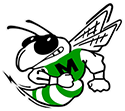Formative/Summative Assessment Information
- Mendon Middle High School Assessment Plan
- Assessment Blueprint Template (.xls file)
- Michigan Assessment Consortium
- Webbs-DOK Flip Chart
- Balance the assessment system- Effective classroom assessments blended with benchmark/annual assessments. Information from all levels is used to fill all gaps and redundancies. Formative and Summative assessments work as a system providing information to each other as needed.
- Deconstruct standards into appropriate learning targets. These learning targets need to be developed into student-friendly statements displayed during the lesson to clearly specify what students are to learn.
- Refine or develop academic standards. Clear, relevant, and rigorous achievement standards define content. Local standards should be all of the following:
- Clear – Clearly stated and understandable by students and teachers as well as community members
- Aligned – Aligned with state standards for accountability
- Essential – What is the most important concepts to learn. Needed for the next level of learning.
- Realistic – Achievable by students. All conditions and materials are available for students to reach targets.
- Measurable – What students need to know can be measured. Outcomes in the standard are expressed in measurable terms.
- Developmental – local standards unfold over time across grade levels and avoid gaps and redundancies.
- Ensure assessment quality – Does each assessment yield dependable results that can be used to diagnose problems and provide reliable data on student achievement.
- Use assessment for learning strategies in the classroom.
- Can educators help students maintain confidence in themselves so they will want to continue trying? This can be done by applying consistent application of classroom assessment for learning. This process helps students understand what good work is, identifying the differences between good work and the standard of excellence, and help students to close the gap. The results can be profound gains in student achievement, with larger gains from low achievers.
- Build communication systems to support and report learning .
- Reporting Learning
- Report card grades and test scores provide a summary on learning success or failure.
- Support Learning
- Feedback focuses on attributes of student’s work not attributes of the students as a learner (“This is how to make your writing better instead of “try harder”)
- Is descriptive of student work providing information to students on how to do better the next time instead of being judgmental.
- Is clearly understood by the user helping them to infer what is needed
- Is in time to inform learning
- Has enough detail to be helpful but not too much to overwhelm.
- Reporting Learning
- Motivate students with learning success.
- Higher levels of accountability does not serve as a motivator for all students.
- Success at learning works as a motivator.
- Teachers helping students to self assess and set goals to increase their learning, giving students the tools to be in control of their learning.
- Teachers can help students understand what good work looks like, compare work to the standard of quality for strength and needs.
Examples of Formative Assessments to use in class
http://wvde.state.wv.us/teach21/ExamplesofFormativeAssessment.html#
Articles on Formative Assessment
http://www.education.com/reference/article/assessment-literacy-todays-classroom/
http://www.ascd.org/publications/educational-leadership/dec07/vol65/num04/The-Best-Value-in-Formative-Assessment.aspx
Questions regarding Mendon Middle or High School:
Please contact the Middle High School Main Office at 269-496-8491 or email jgriffith@mendonschools.org.
